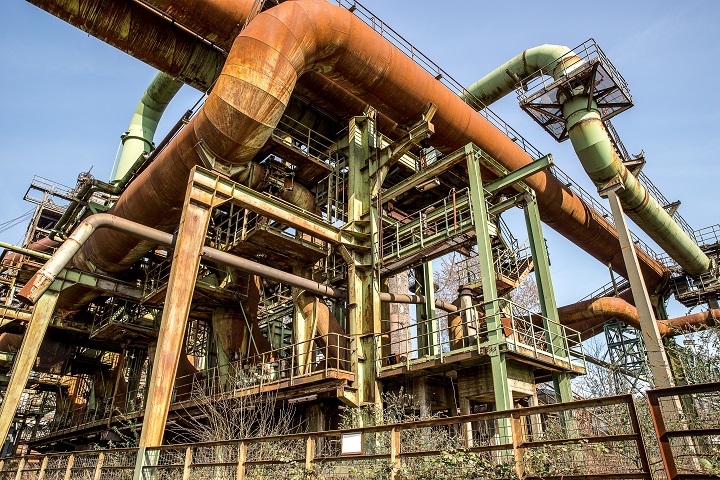 Welcome to the labyrinth of steel pipes, where the intricate world of industrial applications can often leave you in a state of wonder. As you navigate this complex realm, have you ever pondered the differences between oil and gas pipes? Fear not, dear reader, for we shall embark on a journey through the land of industrial pipe suppliers to demystify these elusive marvels.
Welcome to the labyrinth of steel pipes, where the intricate world of industrial applications can often leave you in a state of wonder. As you navigate this complex realm, have you ever pondered the differences between oil and gas pipes? Fear not, dear reader, for we shall embark on a journey through the land of industrial pipe suppliers to demystify these elusive marvels.
Gas Pipes Vs. Oil Pipes: Showing the Differences
To truly appreciate the nuances between gas and oil pipes, we must first explore their compositions, required pressure, corrosion-resistant properties and one more notable difference – heat resistance.
-
Differences in Compositions
Gas pipes typically use high-quality carbon steel, while oil pipes demand a mix of carbon and low-alloy steel. This critical distinction arises from each transportation medium’s unique properties and requirements. Oil pipelines demand exceptional durability and strength, whereas gas pipes must withstand high pressure and corrosion resistance.
-
Required Pressure
The pressure requirements for gas pipes far exceed those of oil pipes. Natural gas pipelines operate under higher pressures, typically 200 to 1,500 psi, while oil pipelines function at comparatively lower pressures of 100 to 800 psi. When designing pipes for their respective applications, industrial pipe suppliers must carefully consider these specifications.
-
Corrosion Resistant Properties
Corrosion resistance plays a vital role in the performance and longevity of both gas and oil pipes. Gas pipes tend to be more susceptible to corrosion due to the presence of water and carbon dioxide. In contrast, oil pipes are less vulnerable, thanks to the natural corrosion inhibitors found in crude oil. To counteract these challenges, professional industrial pipe suppliers often incorporate corrosion-resistant alloys or external coatings in their designs.
-
Heat Resistance
In high-temperature environments, heat resistance becomes a critical factor. While both types of pipes must withstand varying degrees of temperature fluctuations, oil pipes typically face more significant challenges due to the heat generated during oil extraction and transportation. Consequently, oil pipes demand superior heat-resistant materials and construction.
Before Transportation, Industrial Pipe Suppliers Go for a Variety of Treatment
Pipe suppliers must perform various treatments on gas and oil pipes before they can be deemed suitable for transportation. These essential processes ensure the pipes’ structural integrity, corrosion resistance and overall performance. Below, learn more about the necessary treatments that shape the backbone of these indispensable conduits:
-
Cleaning and Degreasing
The first step in the treatment process is to clean and degrease the pipes, removing any dirt, oil and contaminants that may have accumulated during manufacturing. This step is crucial in ensuring a pristine surface for subsequent treatments.
-
Surface Preparation
Industrial suppliers meticulously prepare their surfaces by sandblasting, shot blasting or another suitable technique to enhance the pipes’ performance further. This process removes rust, scale and any remaining contaminants while creating an ideal surface profile for coating applications.
-
Protective Coating
While manufacturing, pipe suppliers apply protective coatings to fortify their pipes against the harsh conditions they will face during transportation. These coatings, often composed of epoxy or polyurethane, protect the pipes from corrosion, abrasion and other potential threats.
-
Heat Treatment
To improve the mechanical properties of the steel and increase its durability, industrial steel pipe suppliers subject the pipes to heat treatment. This process involves heating the pipes to a specific temperature and then cooling them at a controlled rate, ultimately enhancing their strength, hardness and flexibility.
-
Hydrostatic Testing
As a final measure, pipe suppliers perform hydrostatic testing to ensure the pipes can safely withstand the pressures they encounter during operation. This crucial test involves filling the pipes with water and subjecting them to the required pressure for a specified duration. They thoroughly examine leaks, deformations or failures before the pipes are ready for transportation.
Bottom Line
We have now traversed the captivating world of steel pipes, unraveling the intricate differences between gas and oil pipes and examining the various treatments the manufacturers perform to ensure their resilience and efficiency. As we return from our enlightening journey, it is evident that these seemingly mundane conduits are, in fact, the lifelines that support our modern infrastructure.
International Pipe: Explore the Countless Possibilities
Join the quest for the perfect pipe with International Pipe, the leading industrial pipe suppliers
– “where innovation and expertise combine to create the ultimate solution for your industrial needs.” Visit our website today to discover more about our wide range of products and services. Together, let’s forge a path to success with the unparalleled power of steel pipes!
